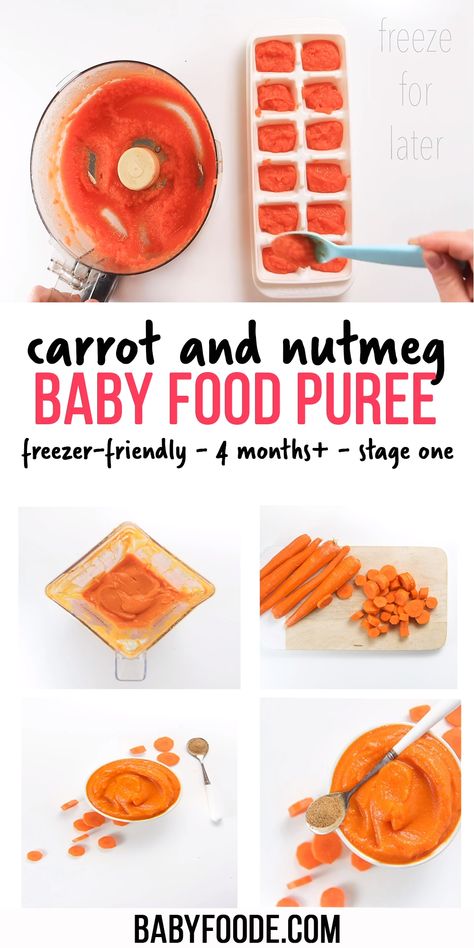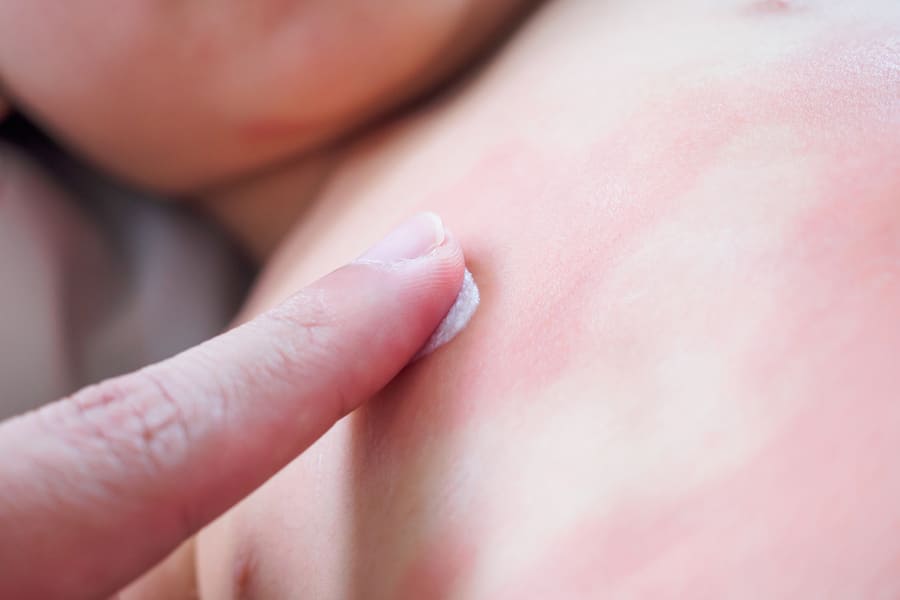Do you give baby food before or after bottle
Balancing introducing solids with milk feeds
At around 6 months of age babies need to start having solid foods as well as breastmilk or formula. Find out how to get started with solid foods and what are the best foods to start with.
When to introduce solids?
At 6 months, your baby will still be getting most of their nutrition from breast milk or formula.
As you introduce solid foods, continue feeding with breastmilk or formula until at least 12 months of age.
Start to introduce solid foods at around 6 months of age when:
- your baby can sit up with support and has good head control
- your baby starts to show interest in food such as watching and reaching out when they see food
Even though some babies show these signs from an earlier age, continue to offer your baby breastmilk or formula if they appear hungry. This is usually all they need until around 6 months. It’s recommended that you don’t introduce solids before 4 months.
How to introduce solid foods into your baby’s diet
Start feeding your baby solids once a day. Your baby will take only small amounts of solid foods at first. Try one teaspoon at first of pureed vegetable, fruit, or rice cereal in between milk feeds.
From 6 to 9 months continue to give your baby breastmilk or formula first, then try solids after the milk.
From 9 months you can try to give solids first, then breastmilk or formula. This allows for your baby to naturally transition to solids by around 12 months.
At around 8 to 9 months try giving your baby solids as part of breakfast, lunch, and dinner.
Continue breastmilk or formula through the first year of life while foods are being introduced. From around 6 months you can try small amounts of cooled boiled water out of a sippy cup.
Which foods first?
From 6 months of age baby’s first foods should contain iron. Foods that have iron, include:
- iron-fortified baby cereals
- meat
- poultry
- fish
- legumes - lentils, beans, or chickpeas
Guidelines recommend that you can introduce foods in any order and at a pace that suits your baby, family, and cultural backgrounds, as long as some foods servings contain iron.
Your baby’s first foods can be smooth, mashed or have soft lumps.
Choose from the 5 food groups.
Vegetables and legumes
Give your baby cooked and pureed:
- pumpkin
- sweet potato
- carrots
- potato
- peas
- broccoli
- cauliflower
- zucchini
Over time puree them less so the texture gets lumpier.
Then introduce vegetables that are cooked but not pureed.
Fruit
Give your baby stewed and pureed:
- apples
- pears
- peaches
- apricots
- berries
Your baby might also like to try mashed ripe banana.
Gradually introduce pieces of cooked fruit, banana, peach and grated raw apple.
Avoid larger pieces of raw apple; babies can choke on them.
Grains and cereals
Give your baby fortified infant cereals (e.g. rice cereal) to start.
Move to cooked rolled oats, wholegrain breakfast biscuits (Weetbix, Vita Brits) or thick infant cereals.
Don’t add sugar or honey or offer cereals with chocolate or added sugar.
Meat, fish, poultry, eggs, legumes, tofu
Meat, fish, poultry eggs, legumes, tofu should always be pureed when you start introducing solids.
When your baby accepts this, offer them bite size pieces of:
- chicken
- minced meat
- flaked fresh or canned fish (in spring water)
- mashed tofu
- mashed legumes
- scrambled or mashed boiled eggs
Don’t add salt. Also avoid processed meats as they have a lot of salt.
Milk, cheese, yoghurt
Formula should be used only until your baby is 12 months old. Then small amounts of milk can be added to foods like porridge. Breast feeding is recommended to continue until the age of 2 or longer.
Grated cheese is good in mashed vegetables.
Choose yoghurt without added sugar. Add fruit for extra flavour
What drinks should I be giving my baby?
After 12 months of age breastmilk, water (clean tap water or bottled water) and full fat cow’s milk should be the main drinks you offer your baby.
Keep breastfeeding for as long as you and your baby like.
Switch from formula to full fat ordinary cow’s milk after 12 months. Your child doesn’t need toddler milk products. Offer your baby a cup to drink from rather than a bottle. Your one-year-old should be exclusively drinking from a toddler cup.
From about 12 months, you can try rice milk and oat milk (fortified with at least 100mg calcium/100mL) if you want. But these drinks don’t have enough protein and vitamin B12. Your baby will need to have plenty of meat, poultry, fish, eggs, yoghurt, or cheese to make up for what they’re not getting from cow’s milk.
How much should I feed my baby?
Your baby will grow at different rates at different times. Their appetite can vary, even from day to day.
Babies don’t know what to eat but they know how much. Provide wholesome, healthy unprocessed food choices. Take your cue from your baby. Babies tend to turn away or lose interest when they’ve had enough to eat.
Finger foods and self-feeding
By 9 to 12 months, most babies like finger foods. Finger foods are foods they can hold themselves.
Some also like to hold their own spoon at that age. It will be messy! But learning to feed themselves is important.
By 12 months, your baby can eat the same healthy food you serve your family.
Foods to limit or avoid when introducing solids
There are some foods and drinks you should limit or avoid:
- coffee and tea, herbal drinks are not recommended
- fruit juice
- honey until 12 months (to prevent botulism)
- processed foods
- raw or runny eggs (bacteria in raw eggs can be harmful to babies)
- sugar sweetened drinks
- unpasteurised milks
Low-fat milks are not recommended in the first 2 years of life. Goat’s milk, sheep’s milk, soy milk, coconut milk and almond milk should also be avoided before the age of 2 unless your doctor recommends them.
Avoid small hard foods such as whole nuts and uncooked vegetables until 3 years. These can be choking hazards.
If your family doesn’t use animal products, your baby may need a vitamin B12 supplement. Discuss this with your doctor.
Seek help from your health care professional if you are worried about your baby’s eating or development.
Fruit — give your baby stewed and pureed apples, pears, peaches, apricots and berries, or mashed ripe banana. Gradually introduce pieces of cooked fruit, banana, peach and grated raw apple. Avoid larger pieces of raw apple; babies can choke on them.
Grains and cereals — give your baby fortified infant cereals (e.g. rice cereal) to start. Move to cooked rolled oats, wholegrain breakfast biscuits (Weetbix, Vita Brits) or thick infant cereals. Don’t add sugar or honey and don’t use cereals with chocolate or added sugar.
Meat, fish, poultry, eggs, legumes, tofu — make them pureed at the start. When your baby accepts this, offer them pieces of chicken, minced meat, flaked fresh or canned fish (in spring water), mashed tofu, mashed legumes, scrambled or mashed boiled eggs. Don’t add salt and avoid processed meats as they also have a lot of salts.
When your baby accepts this, offer them pieces of chicken, minced meat, flaked fresh or canned fish (in spring water), mashed tofu, mashed legumes, scrambled or mashed boiled eggs. Don’t add salt and avoid processed meats as they also have a lot of salts.
Milk, cheese, yoghurt — breast milk or formula should be used for up to 12 months, then small amounts of milk can be added to foods like porridge. Grated cheese is good in mashed vegetables. Choose yoghurt without added sugar. Add fruit for extra flavour.
How much?
Babies grow at different rates at different times. Their appetite can vary even from day to day.
Babies don’t know what to eat but they know how much. Take your cue from your baby. Healthy babies turn away or lose interest when they’ve had enough.
Finger foods and self-feeding
By 9 to 12 months, most babies like finger foods.
Some also like their own spoon at that age. It will be messy, but learning to feed themselves is important.
By 12 months, serve the same healthy food you serve your family, but without hot spices.
Encourage infants to feed themselves.
If you have stopped breastfeeding, switch to ordinary cow’s milk after 12 months. Use a cup rather than a bottle. Limit the amount of cow’s milk to around 500ml per day. Under health professional supervision, you can use full fat rice milk or oat milk with at least 100mg calcium per 100mL if you want, as long as other sources of protein are included (meat, chicken, fish, eggs, legumes or nut butters).
Your child doesn’t need toddler milk products.
If your family doesn’t use animal products, your baby may need a vitamin B12 supplement. Discuss this with your doctor.
Learn more here about the development and quality assurance of healthdirect content.
Formula Feeding FAQs: Starting Solids and Milk
Home | Patients and Families | Health Library | Formula Feeding FAQs: Starting Solids and Milk
- are interested in foods (for example, they may watch others eat, reach for food, and open their mouths when food approaches)
- hold up their heads well, and sit up with little or no help
- have the oral motor skills needed to eat (meaning that they don't push food of the mouth but move it to the throat and swallow it)
- usually weigh twice their birth weight, or close to it
Whether you've decided to formula feed your baby from the start, are supplementing your breast milk with formula, or are switching from breast milk to formula, you're bound to have questions. Here are answers to some common queries about formula feeding.
Here are answers to some common queries about formula feeding.
When should I introduce solid foods and juice?
The best time to introduce solid foods is when your baby has developed the skills needed to eat. This usually happens between the ages of 4 and 6 months. How do you know when your baby is ready?
Babies who are ready to eat solids foods:
Wait until your baby is at least 4 months old and shows these signs of readiness before introducing solids. Babies who start solid foods before 4 months are at a higher risk for obesity and other problems later on. They also aren't coordinated enough to safely swallow solid foods and may choke on the food or inhale it into their lungs.
They also aren't coordinated enough to safely swallow solid foods and may choke on the food or inhale it into their lungs.
When the time is right, start with a single-grain, iron-fortified baby cereal (rice cereal has traditionally been the first food for babies, but you can start with any you prefer). Start with 1 or 2 tablespoons of cereal mixed with breast milk, formula, or water. Another good first option is an iron-rich puréed meat. Feed your baby with a small baby spoon, and never add cereal to a baby's bottle unless your doctor recommends it.
At this stage, solids should be fed after a nursing session, not before. That way, your baby fills up on breast milk, which should be your baby's main source of nutrition until age 1.
When your baby gets the hang of eating the first food, introduce a variety of other foods, such as puréed fruits, vegetables, beans, lentils, or yogurt. Wait a few days between introducing new foods to make sure your baby doesn't have an allergic reaction.
Experts recommend introducing common food allergens to babies when they're 4–6 months old. This includes babies with a family history of food allergies. In the past, they thought that babies should not get such foods (like eggs, peanuts, and fish) until after the first birthday. But recent studies suggest that waiting that long could make a baby more likely to develop food allergies.
Offer these foods to your baby as soon as your little one starts eating solids. Make sure they're served in forms that your baby can easily swallow. You can try a small amount of peanut butter mixed into fruit purée or yogurt, for example, or soft scrambled eggs.
Note: There is no benefit to offering fruit juice, even to older babies. Juice can fill them up and leave little room for more nutritious foods, promote obesity, cause diarrhea, and even put a baby at an increased risk for cavities when teeth start coming in.
When can I start giving my baby cow's milk?
Before their first birthday, babies still need the nutrients in breast milk or formula. But at 1 year old, your baby can try whole cow's milk. Why not skim or 2%? Because babies need the fat in whole milk for normal growth and brain development during the busy early toddler period.
But at 1 year old, your baby can try whole cow's milk. Why not skim or 2%? Because babies need the fat in whole milk for normal growth and brain development during the busy early toddler period.
You can transition your baby from formula to whole milk by beginning to replace bottles of formula with bottles — or sippy cups — of milk. By 1 year old, your baby should be eating a variety of other foods and only 2-3 cups (480-720 milliliters) of milk per day.
If your baby was put on a soy or hypoallergenic formula because of a milk allergy, talk to your doctor before introducing milk.
When can I start giving my baby water?
In their first few months, babies usually don't need extra water. On very hot days, most babies do well with additional feedings. But you may want to offer your infant water, especially if your baby's pee is dark or your baby pees less often than usual.
Once your baby is eating solid foods, you can offer a few ounces of water between feedings, but don't force it. Water that is fortified with fluoride will help your baby develop healthy teeth and gums. If you live in an area with nonfluoridated water, your doctor or dentist may prescribe fluoride drops.
Water that is fortified with fluoride will help your baby develop healthy teeth and gums. If you live in an area with nonfluoridated water, your doctor or dentist may prescribe fluoride drops.
Note: All information is for educational purposes only. For specific medical advice, diagnoses, and treatment, consult your doctor.
© 1995-2023 KidsHealth® All rights reserved. Images provided by iStock, Getty Images, Corbis, Veer, Science Photo Library, Science Source Images, Shutterstock, and Clipart.com
Introduction of complementary foods into children's nutrition
Solid Tip
FREQUENTLY ASKED QUESTIONS
When should solid foods be started?
For each child, this is decided individually, but in general, complementary foods should be started at four months. Consult with your pediatrician.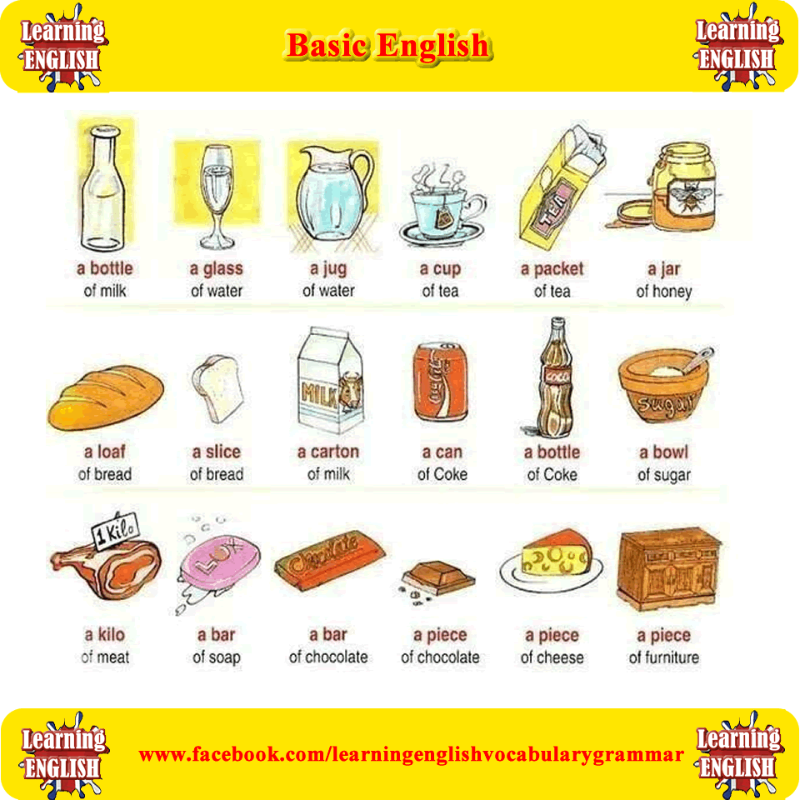 Your doctor will help you decide when and how to start complementary foods (develop a program for the introduction of complementary foods). When prescribing complementary foods, the doctor is guided by the following developmental indicators:
Your doctor will help you decide when and how to start complementary foods (develop a program for the introduction of complementary foods). When prescribing complementary foods, the doctor is guided by the following developmental indicators:
- when the child is no longer satisfied with breast milk or formula;
- when the child can sit with someone else's help;
- when the child can independently hold the head and turn it away when he refuses food.
What other signs can be used to determine that a child is ready to receive solid food?
Key factors are the child's body weight, appetite and activity.
A baby is considered ready to receive complementary foods when its weight:
- is about 6.5 kg or
- doubled since birth.
As for appetite, is your baby:
- ready to eat more after feeding;
- often seems hungry;
- when breastfeeding, it requires eating more often than 8-10 times a day (with artificial feeding, it can drink almost a liter of the mixture per day).

Why should we not start complementary foods before four months?
Most babies at an earlier age are not yet ready to accept solid foods. Their digestive system is not yet fully developed. In addition, children under the age of four months are more prone to allergies (this is covered in more detail later in this booklet).
Is it true that solid food helps a child sleep better at night?
No, it is not. This widely held belief has not been supported by scientific research. Therefore, solid foods should not be introduced prematurely.
What solid foods should I start complementary foods with?
Most doctors recommend porridge made from one type of cereal. Rice porridge is considered the best option for the first complementary foods. Rice is highly digestible and a good source of iron, calcium and vitamins. After feeding the child with rice porridge for three to five days, you can offer him oatmeal or barley porridge. Feeding wheat porridge is best postponed until the age of six months, as many children do not tolerate wheat.
Feeding wheat porridge is best postponed until the age of six months, as many children do not tolerate wheat.
Why should porridge be made from one type of grain?
To control allergic reactions. By using one kind of grain, you and your doctor will be able to clearly identify the source of the allergy if your baby develops it after weaning. Most babies do not have any allergic reactions to rice.
How to cook porridge?
Very simple. Start with a very thin mixture of 1-2 tablespoons of warm breast milk (or formula milk) mixed with 1-2 teaspoons of Rice Porridge Powder. Never forget to check the temperature of the mixture. It should be warm, not hot.
Do I need to change the consistency of porridge later?
Yes. As soon as your baby gets used to feeding porridge (and you make sure that he does not have any negative reactions to porridge), it is recommended to increase the amount of food and make it thicker. Usually, by the age of six months, the amount of porridge is adjusted to 5-8 teaspoons (dry porridge) per day, depending on the child's appetite.
How many times a day should a child be fed solid food?
Start with one meal a day of rice porridge as described above. This will allow you to clearly identify any allergic reactions your child may have. Continue breastfeeding (or formula) at the same time. When you are sure that the baby perceives porridge well, increase the number of feedings to two per day. After another three to five days, you can add a second porridge from another grain or a single-ingredient fruit or vegetable mixture to the diet.
Should an adult taste a child's food?
Certainly. This will allow you to make sure that it is not too hot.
If food seems too bland to me, can I spice it up?
No. Remember that this food is not designed for your taste. It is specially designed for feeding your baby. No need to add salt, sugar, or spices to it - it contains everything you need.
Does breastfeeding affect solid foods?
Breast milk contains a perfectly balanced set of proteins that your baby needs. When a baby's diet replaces most of the breast milk with low-protein foods (such as fruits such as peaches and pears), this can significantly upset the established protein balance. Therefore, many doctors recommend for breastfed babies to introduce complementary foods not from fruits, but from high-protein foods such as meat, which will maintain protein balance. Your pediatrician will help you decide what to feed your baby.
When a baby's diet replaces most of the breast milk with low-protein foods (such as fruits such as peaches and pears), this can significantly upset the established protein balance. Therefore, many doctors recommend for breastfed babies to introduce complementary foods not from fruits, but from high-protein foods such as meat, which will maintain protein balance. Your pediatrician will help you decide what to feed your baby.
How long can the first weaning last?
Solid food takes some getting used to. Remember, this is a new event, both for you and for your baby. The first feedings can be very short - twenty or thirty seconds. If the child gestures that he no longer wants, stop. If you continue to force him, the child may have unpleasant associations associated with feeding. Be patient. Praise your baby and yourself, and save complementary foods until another time. Finish breastfeeding or nipple with formula.
What equipment is needed for feeding?
We recommend a long-handled baby spoon with a rubber or plastic coating so that the metal does not irritate the baby's gums.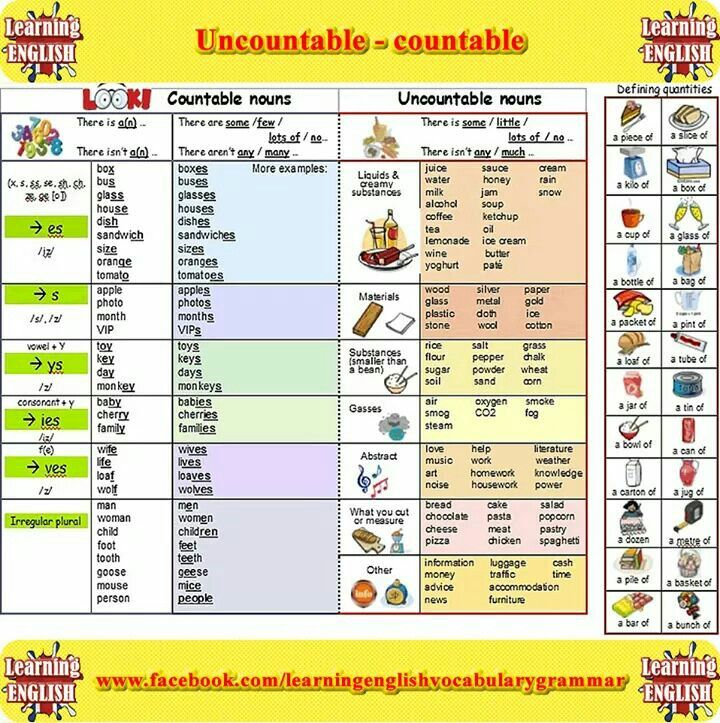 Any unbreakable bowl that is also microwave safe will work. When you reheat baby food in the microwave, be sure to stir it well to avoid hot lumps and check the temperature before feeding. A good children's cup is a little weighted, with two handles and a spout. The highchair or child seat must be on a solid, stable surface and the child must be securely strapped into it.
Any unbreakable bowl that is also microwave safe will work. When you reheat baby food in the microwave, be sure to stir it well to avoid hot lumps and check the temperature before feeding. A good children's cup is a little weighted, with two handles and a spout. The highchair or child seat must be on a solid, stable surface and the child must be securely strapped into it.
When should I start teaching my child to drink from a cup?
By the age of seven months, babies can start drinking from a cup held by an adult. By one year, most children are able to handle a cup on their own.
When is the best time of day to give complementary foods?
Most pediatricians believe that it is best to start solid foods in the middle of the morning. Choose a time of the day when you experience the least stress, when your child is not too hungry - then he will be more calm and patient. Try to keep both you and your baby in a good mood and calm. Try breastfeeding (or from a pacifier) a little first to satisfy the first hunger and bring him into a calm mood, and then grab a spoon. The first attempts at spoon feeding are not intended to feed the baby, but to teach him a new skill. It is likely that the baby will not get much food at first when spoon-fed. Therefore, always end your breastfeeding or a bottle with a pacifier.
The first attempts at spoon feeding are not intended to feed the baby, but to teach him a new skill. It is likely that the baby will not get much food at first when spoon-fed. Therefore, always end your breastfeeding or a bottle with a pacifier.
How to hold the baby while feeding?
Sit the child upright. This makes it easier to swallow solid food. You can hold your baby on your lap, or securely fasten your baby into a high chair or child seat, which must be on a firm, stable surface.
Can I heat baby food in the microwave?
Yes, but be careful and carefully follow the instructions on the package. The microwave oven works in such a way that the food in it is heated unevenly, so that food can be very hot on one side of the plate (or jar), and very cold on the other. Therefore, it is very important to mix the food well after reheating and to measure its temperature before feeding.
Never microwave our Stage 1 Meat Mixes directly in the can as the food can overheat and splatter, causing burns.
How much food should you take in a spoon?
Just a small lump of food at the very tip of the spoon. Usually, babies at four months of age cannot close their lips on a spoon.
How to put food in a child's mouth?
Gently place a bolus of food in the middle of the child's tongue. He must get used to this new sensation for him - after all, until now he could only suck liquid, and not swallow solid food.
Can I feed my baby directly from a can?
No. Carefully spoon out the amount of food per feeding. Close the jar tightly and place in the refrigerator. Feeding your baby directly from a jar is a direct way to encourage bacterial growth. In addition, the baby's saliva can make food watery.
Can I feed my baby porridge from a bottle with a nipple?
Not unless your pediatrician has advised you to add dry porridge to formula formula to thicken it. If you feed a baby cereal from a bottle, he may choke or choke. In addition, eating from a spoon is an absolutely necessary skill and now is the time to teach the child this skill so that later he will not have problems with other foods.
In addition, eating from a spoon is an absolutely necessary skill and now is the time to teach the child this skill so that later he will not have problems with other foods.
How long should I feed my baby rice porridge before introducing other complementary foods?
Usually three to five days. This is the usual waiting period before introducing any complementary food after rice porridge, and later, before introducing any other new food.
What's after the rice?
Add another cereal from one type of grain, then other one-ingredient foods from different food groups. Moving gradually in this way, you will “brick by brick”, step by step, build your child's diet, adding each time a new type of solid food - a new consistency and a new taste. Your doctor can recommend a sequence for introducing new foods.
When should I start giving juice to my baby?
Approximately four months old. Feed with juice in the same way as you would with solid foods.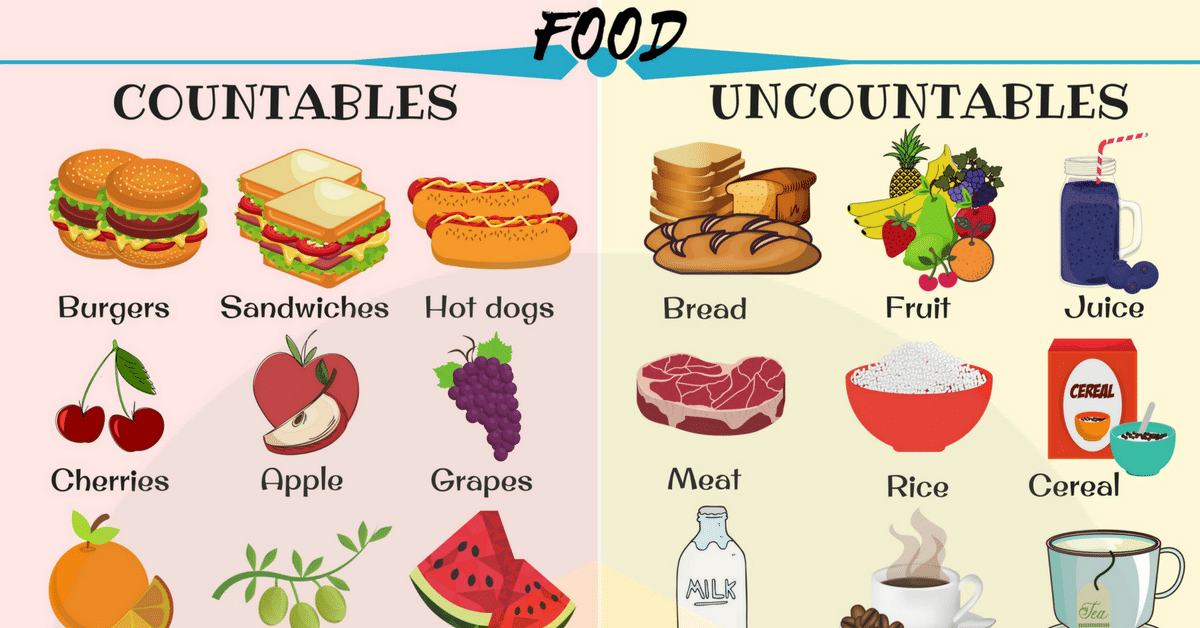 Start with a single-ingredient apple or pear juice made from naturally low acid fruits. For better absorption, start with a solution of 50 g of juice in 50 g of water. If the child tolerates juice well, you can switch to undiluted juice in 3-5 days. Remember that juices thin the stool and often cause diarrhea.
Start with a single-ingredient apple or pear juice made from naturally low acid fruits. For better absorption, start with a solution of 50 g of juice in 50 g of water. If the child tolerates juice well, you can switch to undiluted juice in 3-5 days. Remember that juices thin the stool and often cause diarrhea.
Can I put my baby to bed with a bottle of breast milk, formula or juice?
No, you can't. Each of these foods contains a certain amount of natural sugars. If a child sucks on a bottle with a nipple for a long time, he may develop a dental disease called “bottle caries”. This is such a serious dental disease that sometimes it requires the child to be hospitalized.
To prevent this disease:
- do not let your child sit with a bottle during the day;
- do not put the child to bed with a bottle;
- When your baby has teeth, clean his gums with a damp cloth or bandage after each feed.
How do I give my baby water with solid food?
After the introduction of solid foods, the baby may need additional fluids. High-protein foods, such as pureed meats, put extra stress on a baby's developing kidneys, so it's important to provide more water with them. On the other hand, low-protein foods such as fruits, juices, vegetables, and desserts put less strain on the kidneys and require less water.
High-protein foods, such as pureed meats, put extra stress on a baby's developing kidneys, so it's important to provide more water with them. On the other hand, low-protein foods such as fruits, juices, vegetables, and desserts put less strain on the kidneys and require less water.
How do you know if your baby is getting enough fluids?
Just pay attention to how many times a day the baby wets the diaper. Four to eight times a day is considered normal. If you think your child is not getting enough water, talk to your doctor.
Should I give my child vitamins with solid food?
Talk to your pediatrician about this. A balanced diet usually contains sufficient amounts of vitamins and iron. Adding vitamins to a child's diet without a doctor's approval can cause health and developmental problems for the child.
What if I lose my complementary feeding plan?
If your baby gets sick, the complementary feeding plan may be interrupted. In general, after recovery, you can start from the place where the disease interrupted you. However, talk to your doctor.
In general, after recovery, you can start from the place where the disease interrupted you. However, talk to your doctor.
If I give my child tap water or bottled water to drink, do I need to boil or sterilize it?
Water should be boiled or sterilized only when you are not sure of its purity. The safety of tap water is usually ensured by chlorination, and bottled water by ozonation.
Do I need to keep my baby's hands busy while feeding?
No. Although sacrificing neatness and order, you must leave the child's hands free. So he can push food into his mouth with his fingers if it falls out of there. Active participation in the process of feeding creates positive associations and improves the mood of the baby.
What if the child spits food out of his mouth?
Don't worry, it doesn't mean he doesn't like the food. Your baby is accustomed to sucking, and sucking movements of the lips and tongue are his natural instinct. These movements cause food to be pushed out of the mouth.
If he still doesn't eat, will it harm his health and development?
Don't worry. Even if the baby doesn't eat a lot of complementary foods at first, breast milk or formula will provide adequate nutritional value to the diet. Be sure to breastfeed or nipple after each attempt at weaning.
How many calories should a child get?
A child's energy needs are determined by their rate of growth, metabolism, and activity level. In general, an infant needs approximately 110 calories per 1 kg of body weight per day. EXAMPLE: A four-month-old baby weighing 6 kg should receive approximately 660 calories per day.
How can you tell if a child is hungry?
After the first period of getting used to the spoon, the child will clearly show when he is hungry. If you put a spoon in his mouth, he will begin to swallow greedily. He will open his mouth, as if asking: "More, please." Follow the spoon with your eyes as you feed him. If you hesitate, the baby may even get angry and impatiently grab the spoon with its handles.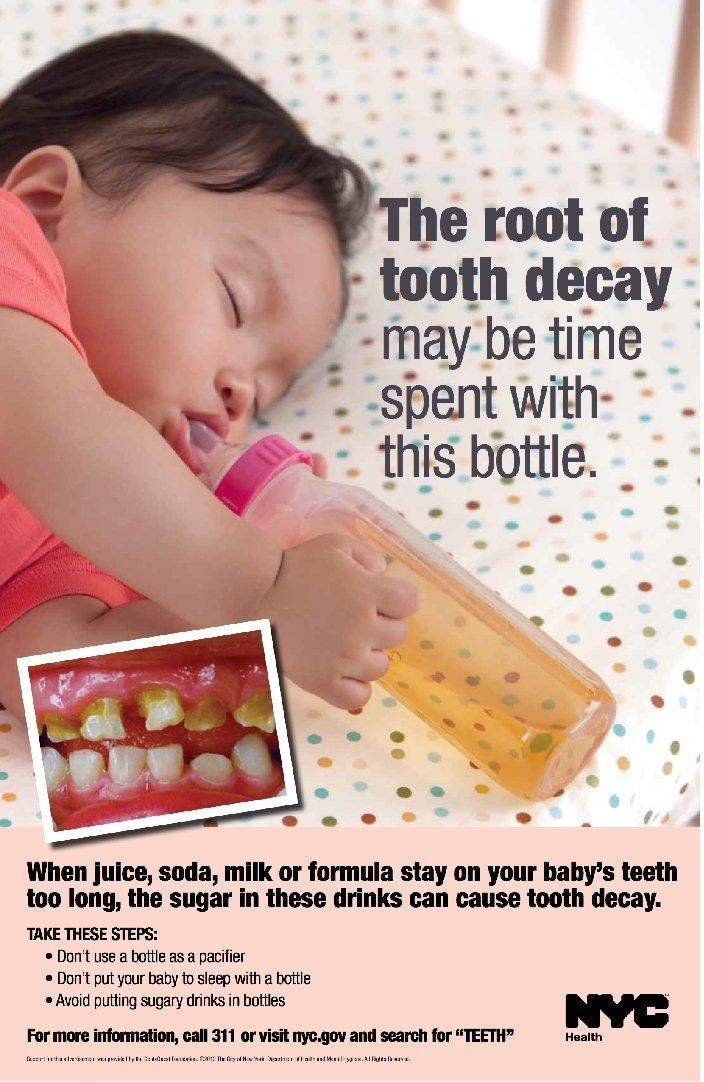
What does a child do when he does not want to eat?
The most common gesture is turning the head to the side. The baby may start crying if you try to force him to eat. If the baby does not want to eat, do not force him. Be patient, try again when the child is hungry.
How do you know when a child is full?
When the baby is full and you try to feed him, he shows the same signs when he does not want to eat: he turns his head to the side and may cry if you try to force him to eat. Or is distracted from the spoon to other objects. Learn to recognize the signals that your child sends you and respect his wishes. Remember, your goal is not to "shove" as much food into the baby as possible. Your goal is a healthy, cheerful child.
How long can baby food be left open?
After opening the jar, take out a feeding portion and put the leftovers in the refrigerator immediately. Meat, vegetable mixes and dinners can be stored in the refrigerator for up to two days. Fruit mixes and juices in single packs usually stay fresh for a week. In all cases, check the storage instructions on the package.
Fruit mixes and juices in single packs usually stay fresh for a week. In all cases, check the storage instructions on the package.
What to do with the uneaten portion?
Reheat only as much food as you expect to feed your baby at one time. If you reheat food and your child doesn't eat it, throw it away. Do not return the uneaten portion to the jar - this encourages the growth of bacteria, and the enzymes contained in saliva thin the mixture. For starters, it is better to buy the smallest jars.
Can baby food be frozen?
We do not recommend freezing store-bought baby food as it becomes thick and inedible.
Why doesn't Beach Nut use modified starch?
Beach-Nut does not use modified starch in its baby food products, in order to meet the wishes of parents.
How to introduce new foods into the diet after cereals?
It is important to introduce only one new product at a time and no more than every 3-5 days.
Why is this important?
By introducing only one new product every 3-5 days, you (and your doctor) will be able to clearly determine whether the child tolerates this product well and does not cause any allergic reactions.
What are allergic reactions?
Food allergies are expressed in a wide variety of symptoms. Some of them are: difficulty breathing, constipation, diarrhea, vomiting, skin rash, cough, runny nose, watery eyes. If you observe any unusual symptoms after introducing a new product, contact your doctor immediately. By introducing one product every 3-5 days, the source of the allergy can be relatively accurately determined.
How soon does an allergic reaction appear?
A reaction that manifests itself in one or more of the above symptoms most often occurs within 24 hours after ingestion of an allergen-containing food. If your child is allergic to any particular food, stop giving that food until your doctor tells you to.
Which foods cause allergic reactions in children?
The most common allergies in young children are eggs, dairy products, grains (wheat and corn), and citrus fruits (orange and lemon juice). Seek medical attention if you experience any signs of an allergy. Remember that allergies can be caused by any food.
Are food allergies hereditary?
Be sure to tell your pediatrician if anyone in your family has food allergies. This information will help your doctor better plan your child's diet.
Are eggs good for children?
Egg white is one of the most common allergens; many babies have severe egg allergies. It is advisable not to give egg whites to children until 9-12 months of age. Yolks usually do not give such a strong reaction as whites. Consult your doctor.
How often should a six month old baby eat?
Babies typically eat three solid foods a day by six months of age, and breastfeed or formula feed 5-6 more times a day. Specific dietary patterns may vary for each child.
Specific dietary patterns may vary for each child.
What do you need to know about introducing multi-ingredient products?
A few things:
- If your child has been hypersensitive to any product, do not give formulas containing that product.
- Keep simple, single-ingredient foods in your child's diet. For example, from time to time offer your child his favorite cereal from one type of grain.
- Remember to supplement your baby with breast or bottled formula at every meal. Breast milk or formula is the mainstay of your baby's diet during the first year of life.
When is it recommended to introduce multi-ingredient foods into the diet?
After you have given your child single foods, formulas containing these foods can be started. Unless your doctor advises otherwise, start introducing complex formulas from six months.
Which difficult mixes to start with?
Check with your doctor.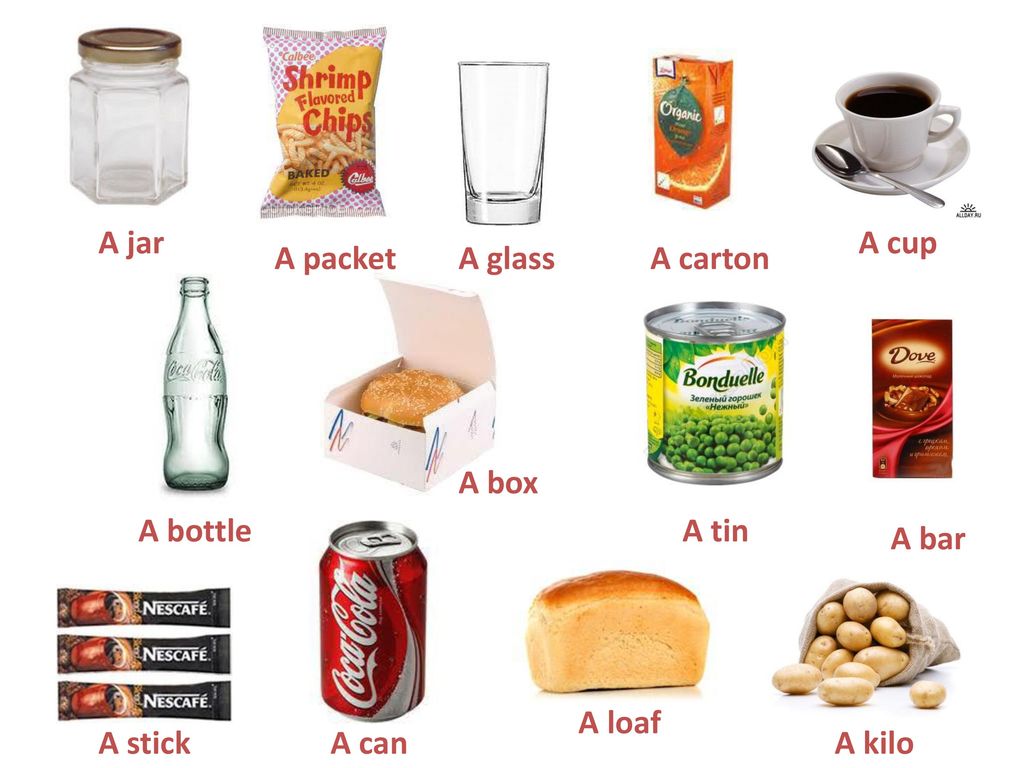 It will help you develop a diet using foods that you know your baby likes and meets their nutritional needs.
It will help you develop a diet using foods that you know your baby likes and meets their nutritional needs.
How much compound formula should be fed compared to simple foods?
As the child grows, he will eat larger portions of solid food and more meals per day. This is normal, as long as you make sure you maintain the right balance of nutrients.
Can I continue to feed my baby simple one-ingredient foods?
Yes. Just add other foods to your child's diet and offer him a choice. Continue to feed your child his favorite food.
When should I start feeding my baby food from the common table?
At the age of 8-10 months, most babies like to chew something in their fists. If your baby tries to feed on his own, try giving him slices of banana or cooked vegetables (such as carrots), slices of cheese, dry biscuits, or small pieces of toasted bread.
Can a child choke on solid food?
There is always a risk of choking. Small children can choke not only on solid food, but also on household items: coins, small toys. Of the foods, the number one cause of food choking among young children is sausages. In principle, any object with a diameter of 2.5 cm can get stuck in a child's throat. Smaller objects can enter the nasopharynx when inhaled. Surprisingly, a small child can stuff an object with a diameter of 5 cm into his mouth. This is the size of a lid from a baby food jar.
Small children can choke not only on solid food, but also on household items: coins, small toys. Of the foods, the number one cause of food choking among young children is sausages. In principle, any object with a diameter of 2.5 cm can get stuck in a child's throat. Smaller objects can enter the nasopharynx when inhaled. Surprisingly, a small child can stuff an object with a diameter of 5 cm into his mouth. This is the size of a lid from a baby food jar.
How can I reduce my child's risk of choking on food?
Cut sausages lengthwise and then crosswise into small pieces less than 2.5 cm. Avoid giving your child grapes, raw carrots, peas, pistachios, large pieces of apple, popcorn, hard candies, large pieces of meat. Soft and sticky foods like toffee or pistachio oil can also get stuck in your throat and cause choking.
Where to start?
Your pediatrician will probably advise you to start with a single-grain porridge, most likely rice. Then start introducing fruits and vegetables into your diet. As your child's appetite grows, move on to larger-sized foods.
As your child's appetite grows, move on to larger-sized foods.
START EATING SOLID FOOD.
Basic tips.
Give your child solid food once a day for the first week. Choose for this time of day, the most quiet for you and the child, when he is not too hungry. Most parents consider mid-morning or mid-afternoon to be the best time.
When your child gets used to eating with a spoon, you can offer him solid food two or three times a day.
- Rice porridge can be your baby's first food.
- When preparing the mixture, follow the simple instructions on the package.
- Take a little of the mixture on the tip of a rubber or plastic-coated spoon and put it in your child's mouth.
- As your baby gets used to eating from a spoon, you can thicken the porridge and increase the amount of formula fed.
- Introduce only one new food to your child's diet at a time.
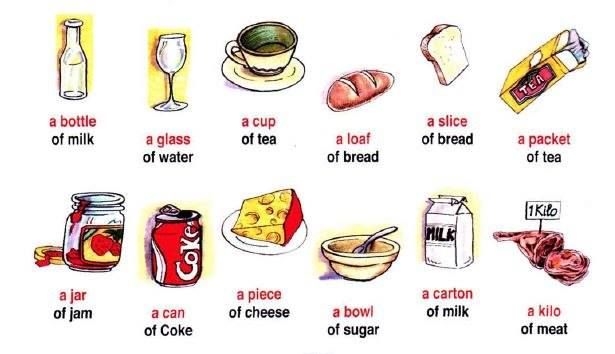 Wait at least three days before introducing another product. This will allow you to control the individual tolerance of each product to your child.
Wait at least three days before introducing another product. This will allow you to control the individual tolerance of each product to your child. - Introduce a new product, starting with a small amount (1-2 teaspoons), increasing the amount every day. The sequence of introduction of new products may be different. Some parents prefer to introduce fruits first and then vegetables, and some prefer the opposite. It cannot be said that one order is correct and the other is not. The main thing is that new products are introduced one at a time and gradually, every 3-5 days. Follow your doctor's advice when determining when your baby will be ready to start solid foods. Each baby is individual and unique, but the general rule for the introduction of complementary foods is four months. What to do and what not to do. Switching a baby to solid foods is not as difficult as it might seem. Here are some helpful tips on what you should and shouldn't do: DO: Wait 3-5 days before adding each new food to your child's diet.
 This will allow you to trace any allergic reactions that the child may have to food; learn to perceive the signals sent by your child. Never force feed your baby. This will give the food a negative emotional connotation; be patient. Forgive yourself and your baby. Tomorrow will be a new day; keep a sense of humor. In the beginning, feedings can be unproductive, frustrating, and often funny; read product labels. Be sure to check the list of ingredients, directions for storage and use. DON'T: Start complementary foods before four months of age (unless your doctor advises otherwise). Your child is not yet ready for this; add seasoning to meals you buy (or cook yourself). Babies don't need sugar or salt; feed the baby in a supine position. He may choke or choke; feed your baby porridge or other solid food from a bottle with a nipple. He may choke or choke; put the baby to bed with a bottle. This can lead to "bottle caries", a serious dental disease; use microwaved food without first stirring it and checking the temperature to make sure it is not too hot; use fluoridated water if you give your child fluoride drops.
This will allow you to trace any allergic reactions that the child may have to food; learn to perceive the signals sent by your child. Never force feed your baby. This will give the food a negative emotional connotation; be patient. Forgive yourself and your baby. Tomorrow will be a new day; keep a sense of humor. In the beginning, feedings can be unproductive, frustrating, and often funny; read product labels. Be sure to check the list of ingredients, directions for storage and use. DON'T: Start complementary foods before four months of age (unless your doctor advises otherwise). Your child is not yet ready for this; add seasoning to meals you buy (or cook yourself). Babies don't need sugar or salt; feed the baby in a supine position. He may choke or choke; feed your baby porridge or other solid food from a bottle with a nipple. He may choke or choke; put the baby to bed with a bottle. This can lead to "bottle caries", a serious dental disease; use microwaved food without first stirring it and checking the temperature to make sure it is not too hot; use fluoridated water if you give your child fluoride drops.
Baby won't take bottle | Philips Avent
search support iconSearch Keywords
Home ›› What to do when your baby refuses a bottle
↑ Top
any problems. If your breastfed baby refuses a bottle, don't worry. This is a common occurrence in many babies who are used to breastfeeding. Obviously, this can create certain difficulties for moms, especially if you need to return to work in the near future.
3 Philips Avent bottle feeding products:
So why is your baby refusing the bottle and crying? There are many ways to quickly and easily teach a breastfed baby to a bottle. Here are important tips on what to do when your baby refuses a bottle.
Baby refuses a bottle? Take a step back
If your baby cries while bottle feeding, the first thing to do is to start over and rethink your feeding approach and technique. Try the following steps when bottle feeding your baby: [1]
- Lift and tilt your baby's head forward.
 Before inserting the pacifier into the baby's mouth, make sure that the baby's head is raised and tilted over his body to avoid choking: so that the baby does not choke and have the opportunity to burp during bottle feeding.
Before inserting the pacifier into the baby's mouth, make sure that the baby's head is raised and tilted over his body to avoid choking: so that the baby does not choke and have the opportunity to burp during bottle feeding. - Insert the pacifier. Bring the pacifier to the baby's lips and gently guide it into the baby's mouth. In no case do not try to press the nipple on the baby's lips and try to push it into his mouth. After touching the pacifier to the baby's lips, wait for the baby to open his mouth and take the pacifier.
- Hold the bottle at an angle. Tilt the bottle at an angle so that the nipple is only half full. So the child can eat at his own pace.
- Let the baby burp during and after feeding. It can be useful for a child to burp not only after feeding, but also approximately in the middle of the process. This will help reduce gas or tummy discomfort that your baby may experience from swallowing too much air.
- Stop in time, do not overfeed the baby.
 If the baby begins to turn his head away from the bottle or closes his mouth, then he is full and you need to stop feeding.
If the baby begins to turn his head away from the bottle or closes his mouth, then he is full and you need to stop feeding. - The flow of milk from the nipple to the baby may be weak or, on the contrary, too fast, so he is naughty and refuses the bottle. Try changing the nipple to a nipple with a different flow.
Other tips if your baby refuses the bottle
If you've followed the steps above and your baby still refuses the bottle, don't worry. There are other ways to help bottle feed your baby. Here are some simple tricks you can add to your bottle feeding process. [2]
1. Remind your child about mom.
Sometimes a child can be fed by someone other than his mother - dad, grandmother or, for example, a nanny. If your baby fusses while bottle feeding, try wrapping the bottle in something that smells like mommy, like a piece of clothing or some fabric. This will make it easier to feed the baby when the mother is not around.
2. Try to maintain body contact while bottle feeding.
Some babies need contact with their mother, so try bottle feeding while leaning against you. However, some babies are better at bottle feeding when they are in the exact opposite position than when they are breastfed. For example, there is a position with bent legs. Lay the child on your bent knees, facing you, pointing the child's legs towards your stomach. During feeding, the baby will be able to look at you and contact you in this way. If your baby refuses a bottle, experiment to see which works best.
3. Move while feeding.
Sometimes all it takes is a little wiggle or walk to get your baby to take the bottle. The next time your baby starts crying while bottle feeding, try moving around a little rhythmically to calm him down.
4. Try changing the milk temperature.
If the baby still does not want to take the bottle, check if the milk in the bottle is too hot or too cold. Before feeding, put some warm breast milk on the inside of your wrist to check the temperature. Milk should be warm, but if it seemed hot to you, just place the bottle for a short while under a stream of cold water.
Before feeding, put some warm breast milk on the inside of your wrist to check the temperature. Milk should be warm, but if it seemed hot to you, just place the bottle for a short while under a stream of cold water.
Choosing the right bottle for your baby
If your baby still refuses a bottle and you have tried all of the above recommendations, the only thing left to do is to try changing the bottle. If you plan to combine bottle feeding with breastfeeding, it is advisable to choose bottles with a nipple that will have a wide base as the bottle will grip closer to the breast. Also pay attention to the fact that the nipple is firm and flexible, the child must make an effort to drink from the bottle, as well as from the breast. Give preference to nipples with an anti-colic valve that vents air out of the bottle.
Natural bottle allows you to combine breast and bottle feeding. 83.3% of babies switch from a Natural bottle to breastfeeding and back.*
If you choose a bottle for artificial feeding, traditional bottles are fine, but it is desirable that the nipple is made of a hypoallergenic material, such as silicone, has an anti-colic valve and did not stick together when bottle fed.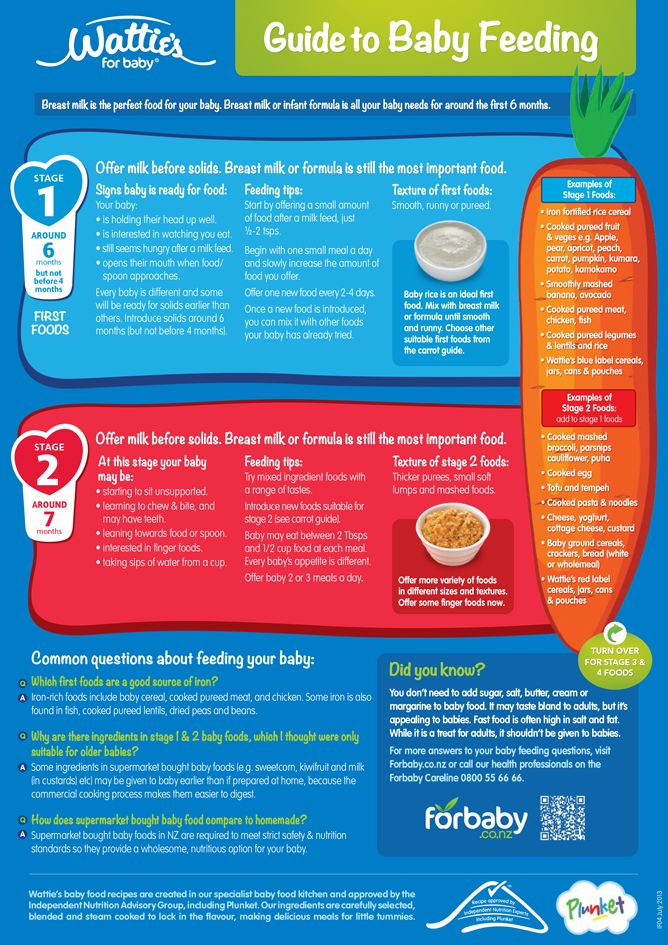 In case your baby spit up often, then use special bottles with anti-colic and anti-reflux valve, which reduces the risk of spitting up and colic.
In case your baby spit up often, then use special bottles with anti-colic and anti-reflux valve, which reduces the risk of spitting up and colic.
Bottle with unique AirFree valve reduces the risk of colic, gas and spitting up. With this bottle, you can feed your baby in an upright or semi-upright position to reduce spitting up. Due to the fact that the nipple is filled with milk and not air during feeding, the baby does not swallow air, which means that feeding will be more comfortable.
Both bottles are indispensable if you want to breastfeed, bottle feed or just bottle feed your baby.
“My baby refuses to breastfeed but bottle feeds – help!”
Sometimes a baby gets used to bottle feeding and refuses to breastfeed. Therefore, it is important to use bottles that are suitable for combining breastfeeding with bottle feeding. If, nevertheless, you are faced with the fact that the child refuses to take the breast, try using silicone nipple covers to make the transition from the bottle to the breast and back more imperceptible.
Remember that if you want to combine breastfeeding and bottle feeding, it is worth waiting at least a month before offering a bottle, so that you are lactating and have time to get used to each other and develop a breastfeeding regimen.
Breastfeed and bottle feed your baby with pleasure
Remember that it takes a while for your baby to get used to bottle feeding. This is completely normal. If you have to go to work, be sure to set aside enough time to bottle train your baby beforehand.
Remember that every child is different, so what works for one may not work for another. With a little time and patience, you will find out what works best for your baby when he refuses a bottle.
You will identify your child's unique needs. However, if your baby still refuses the bottle after all the steps above, check with your pediatrician.
Articles and tips from Philips Avent
Links:
*O.

